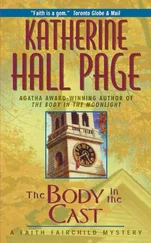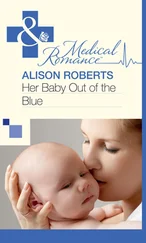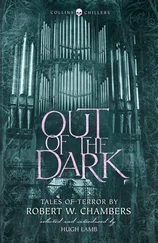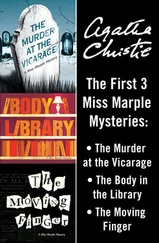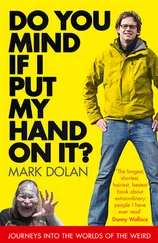Robert Monroe - Journeys out of the body, Practical Guidebook
Здесь есть возможность читать онлайн «Robert Monroe - Journeys out of the body, Practical Guidebook» весь текст электронной книги совершенно бесплатно (целиком полную версию без сокращений). В некоторых случаях можно слушать аудио, скачать через торрент в формате fb2 и присутствует краткое содержание. Жанр: Старинная литература, на английском языке. Описание произведения, (предисловие) а так же отзывы посетителей доступны на портале библиотеки ЛибКат.
- Название:Journeys out of the body, Practical Guidebook
- Автор:
- Жанр:
- Год:неизвестен
- ISBN:нет данных
- Рейтинг книги:5 / 5. Голосов: 1
-
Избранное:Добавить в избранное
- Отзывы:
-
Ваша оценка:
- 100
- 1
- 2
- 3
- 4
- 5
Journeys out of the body, Practical Guidebook: краткое содержание, описание и аннотация
Предлагаем к чтению аннотацию, описание, краткое содержание или предисловие (зависит от того, что написал сам автор книги «Journeys out of the body, Practical Guidebook»). Если вы не нашли необходимую информацию о книге — напишите в комментариях, мы постараемся отыскать её.
Journeys out of the body, Practical Guidebook — читать онлайн бесплатно полную книгу (весь текст) целиком
Ниже представлен текст книги, разбитый по страницам. Система сохранения места последней прочитанной страницы, позволяет с удобством читать онлайн бесплатно книгу «Journeys out of the body, Practical Guidebook», без необходимости каждый раз заново искать на чём Вы остановились. Поставьте закладку, и сможете в любой момент перейти на страницу, на которой закончили чтение.
Интервал:
Закладка:
Sylvan Muldoon passed away in 1971.
Charles Leadbeater
Charles Leadbeater was born in England in 1847 (1854 according to some sources). After dropping out of Oxford due to hard times, Leadbeater became an ordained priest, but then
became quite active in the occult. This led to his
becoming a member of the Theosophical Society
in 1883. Leadbeater became one of its most famous participants.
The combination of a bright mind, scientific
knowledge, and interest in the paranormal led him
to publish many books on many diverse topics. One of them, Dreams: What They Are and How They Are Caused (1898), was one of the first works to touch upon the phenomenon of the phase.
Leadbeater’s writing is saddled with a ton of esoteric terms and theories. In it, the term astral plane is predominantly used for the phase. Nevertheless, the book is not without some helpful guidelines concerning techniques.
Charles Leadbeater passed away in 1934.
Robert Bruce
Robert Bruce was born in England in 1955.
He has performed his life's work while living in
Australia. After studying and promoting
dissociative phenomena for many years, by the beginning of the 21st century he had become one
of the leading authorities in the field. He is also a specialist in many other paranormal fields of study.
Robert Bruce wrote several books, the most
important and well known of which is Astral Dynamics (1999). The author holds quite open esoteric views, which are very strongly reflected in his theories and terminology. The helpful, practical guidelines in his books are quite often loaded with a large amount of information that has not been verified or proven by anyone. Robert Bruce is also a propagator of typical superstitions and stereotypes concerning the phase phenomenon.
Richard Webster
Richard Webster was born in New Zealand,
where he still resides.
He is the author of about 50 publications that
have sold many millions of copies around the world. However, only one of them, Astral Travel for Beginners , is completely devoted to the phase state. The book is saturated with widespread misconceptions about the phase phenomenon and
misguided theories trying to explain it. The technique-related aspect of the book is also presented ineffectively.
It is quite likely that the author himself has no practical experience, which can also be said for the contents of his other dozens of books devoted to various topics.
Charles Tart
Charles Tart was born in the United States in
1937. He received his Ph. D. in psychology in 1963 at the University of North Carolina. Tart also received training at Stanford University. He
was one of the founders of transpersonal psychology.
He became one of the most preeminent researchers of unusual states of awareness after the publication of Altered States of Consciousness (1969), the first book that he worked on. It was one of the first books to examine entering the phase through dream consciousness. The book received popularity when the use LSD and Marijuana were often viewed as vehicles to elevated consciousness, and the book even describes the use of chemical substances in the context of phase states.
Chapter 14 – Final Test
The questions on the test may have one or more correct answers, or none of the answers may be correct. Thus, the questions must be read completely through, and attention must be paid to their implications and finer points.
A student’s theoretical knowledge is considered to be satisfactory if the correct answers to at least one-half of the questions are given. If a score of less than 50% is received, a student should study the weak points again or re-read the entire guidebook. Otherwise, it is quite probable that fundamental mistakes will be made, which will in turn interfere with individual practice.
If a score of at least 80% is achieved, then a theoretical knowledge of the practice is at an advanced level, which will surely have a positive effect on the practitioner’s direct experiences in the phase.
Answers are in the appendix at the end of the guidebook.
1. Noise and realistic images unexpectedly arise when performing the indirect technique of phantom wiggling. What can be done?
A) Continue with phantom wiggling.
B) Switch to observing images or listening in.
C) Try to do all or some of the techniques simultaneously.
D) Choose the technique with the strongest precursors and continue with that one.
2. A practitioner unintentionally opens the eyes for several seconds upon awakening. What is the best way to start indirect techniques from in this case?
A) Attempting to separate.
B) The observing images technique.
C) The rapid eye movement technique.
D) The forced falling asleep technique.
E) It’s best to not start any technique and fall back to sleep with the intention of reawakening and trying to do everything again without first moving.
3. Which actions are preferable for performing a direct technique before falling asleep for the night after a long period of sleep deprivation or exhaustion?
A) Monotonously performing the observing images
technique.
B) Being attentive and concentrating on actions.
C) The absence of a free-floating state of consciousness.
D) Quickly alternating techniques.
E) High-quality relaxation.
4. Mild vibrations occur when performing a direct technique.
Can the straining the brain technique be used to amplify the vibrations?
A) Yes.
B) No.
C) It may be used, but for practical purposes - only when a practitioner is exhausted or sleep-deprived.
D)It may be used, as long as the attempt to enter the phase is not being made during the day
5. Which of the actions given below increase the likelihood of entering the phase through dream consciousness when used right before falling asleep?
A) Performing direct techniques.
B) Intending to perform indirect techniques upon
awakening.
C) Recalling dreams from the night before.
D) Creating a plan of action for use in case of entrance to the phase in such a way.
6. If awareness occurs at the very last moment of a dream that fades away, which of the actions given below should be undertaken in order to enter the phase as soon as possible?
A) Try to fall asleep again in order to once again become self-aware while dreaming.
B) Immediately perform indirect techniques.
C) Take a break and perform direct techniques later.
D) Start to recall that night’s dreams.
7. Which of these are most likely to produce a quick phase entry when awakening in a state of sleep paralysis?
A) Relaxation.
B) Falling asleep with the intention of becoming self-aware while in a dream.
C) Moving the physical eyes and tongue.
D) Direct techniques.
8. What should be done when spontaneously thrown from the body while lying down or waking up in the middle of the night?
A) Return to the body and perform appropriate separation techniques.
B) Implement a predetermined plan of action for the phase.
C) Deepen immediately.
D) Try to quickly establish vision, if it is not already present.
D) Employ the forced falling asleep technique.
9. While trying to enter the phase, rolling out works at first, but only partially, and the movement cannot be extended any further no matter what effort is made. What is it best to do in this situation?
Читать дальшеИнтервал:
Закладка:
Похожие книги на «Journeys out of the body, Practical Guidebook»
Представляем Вашему вниманию похожие книги на «Journeys out of the body, Practical Guidebook» списком для выбора. Мы отобрали схожую по названию и смыслу литературу в надежде предоставить читателям больше вариантов отыскать новые, интересные, ещё непрочитанные произведения.
Обсуждение, отзывы о книге «Journeys out of the body, Practical Guidebook» и просто собственные мнения читателей. Оставьте ваши комментарии, напишите, что Вы думаете о произведении, его смысле или главных героях. Укажите что конкретно понравилось, а что нет, и почему Вы так считаете.

